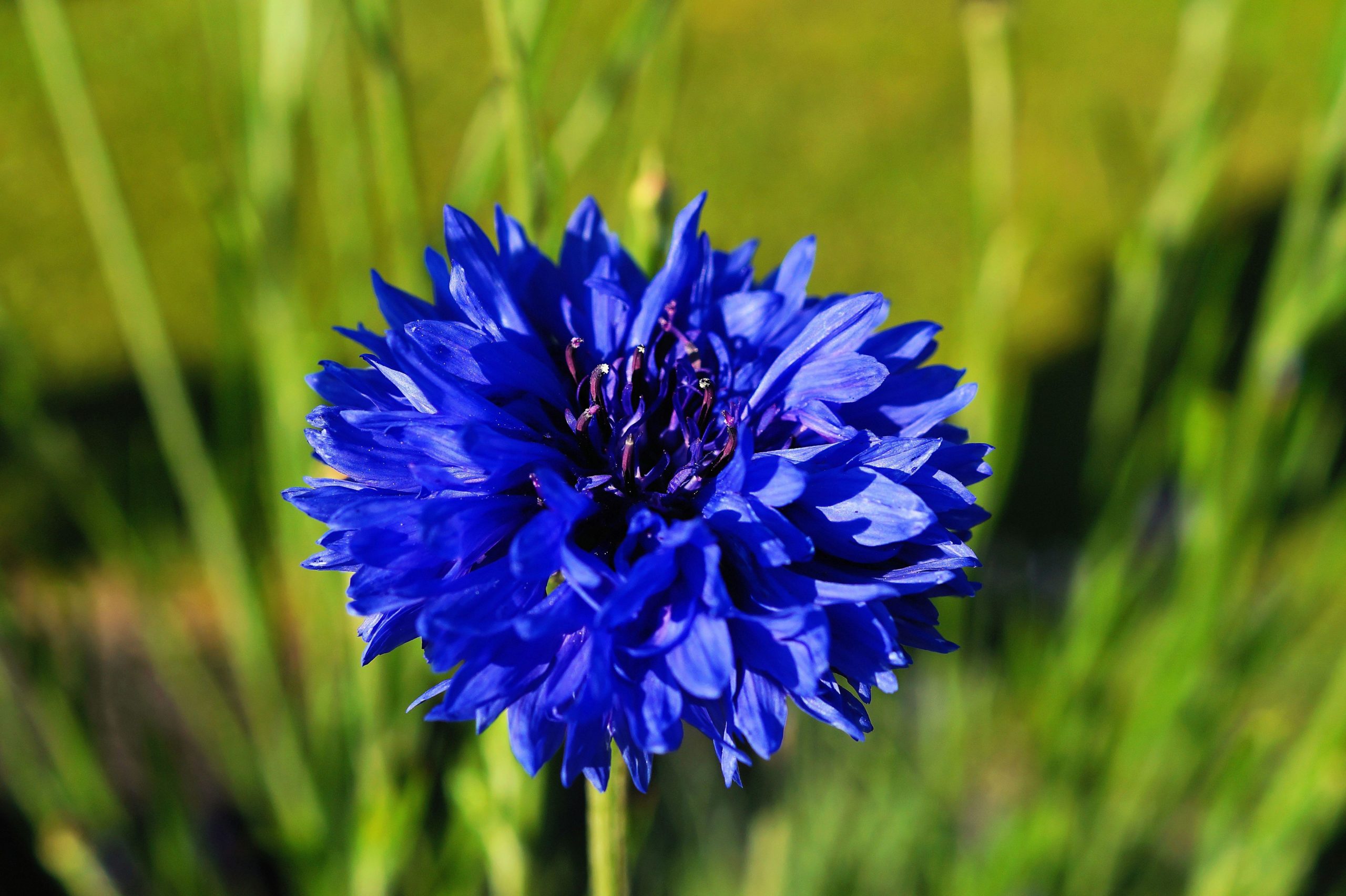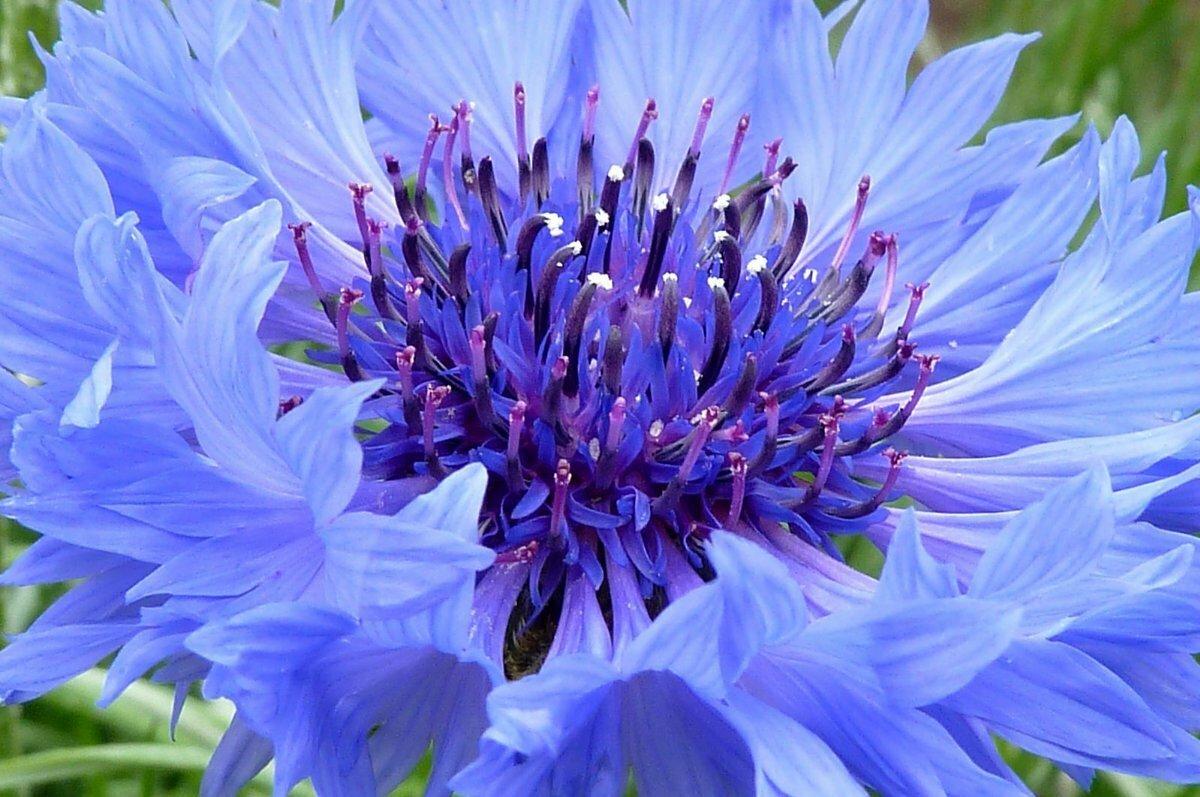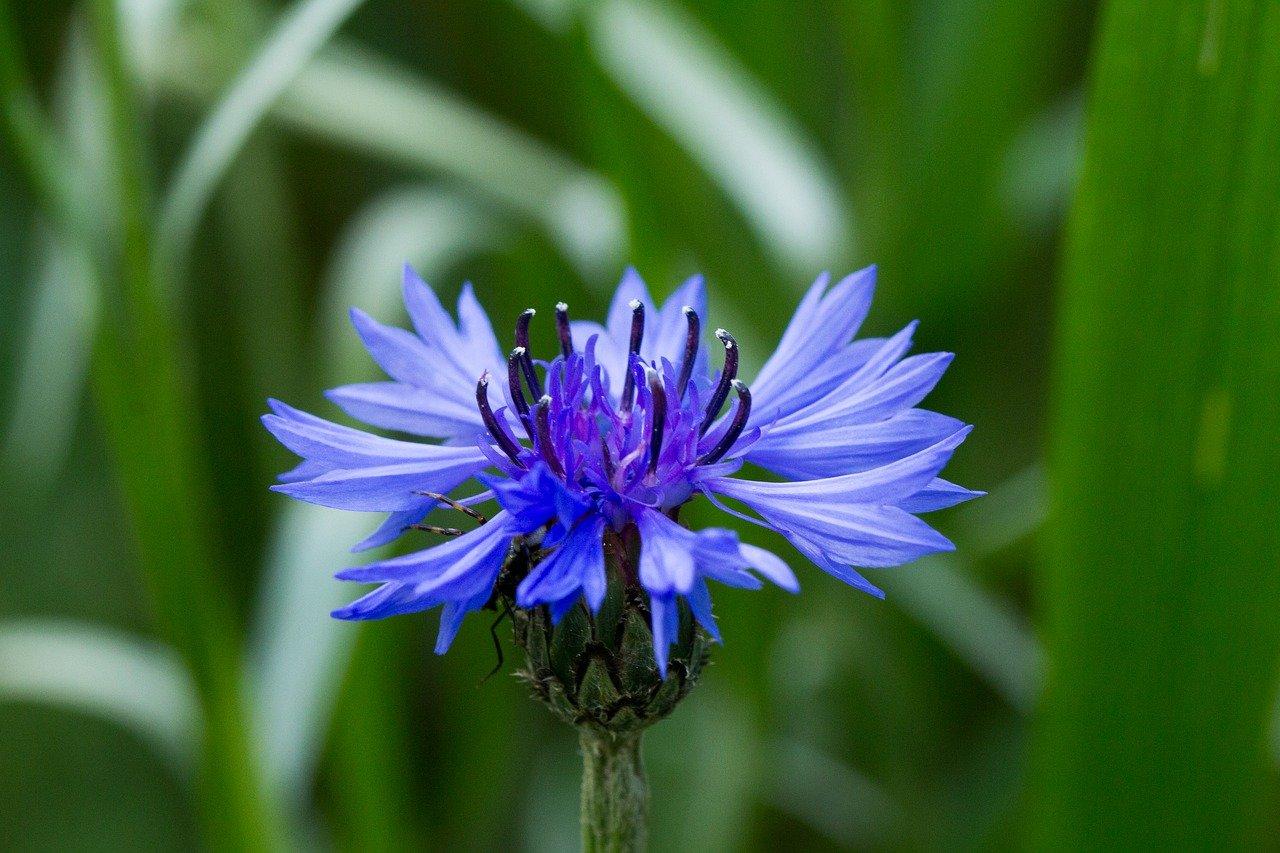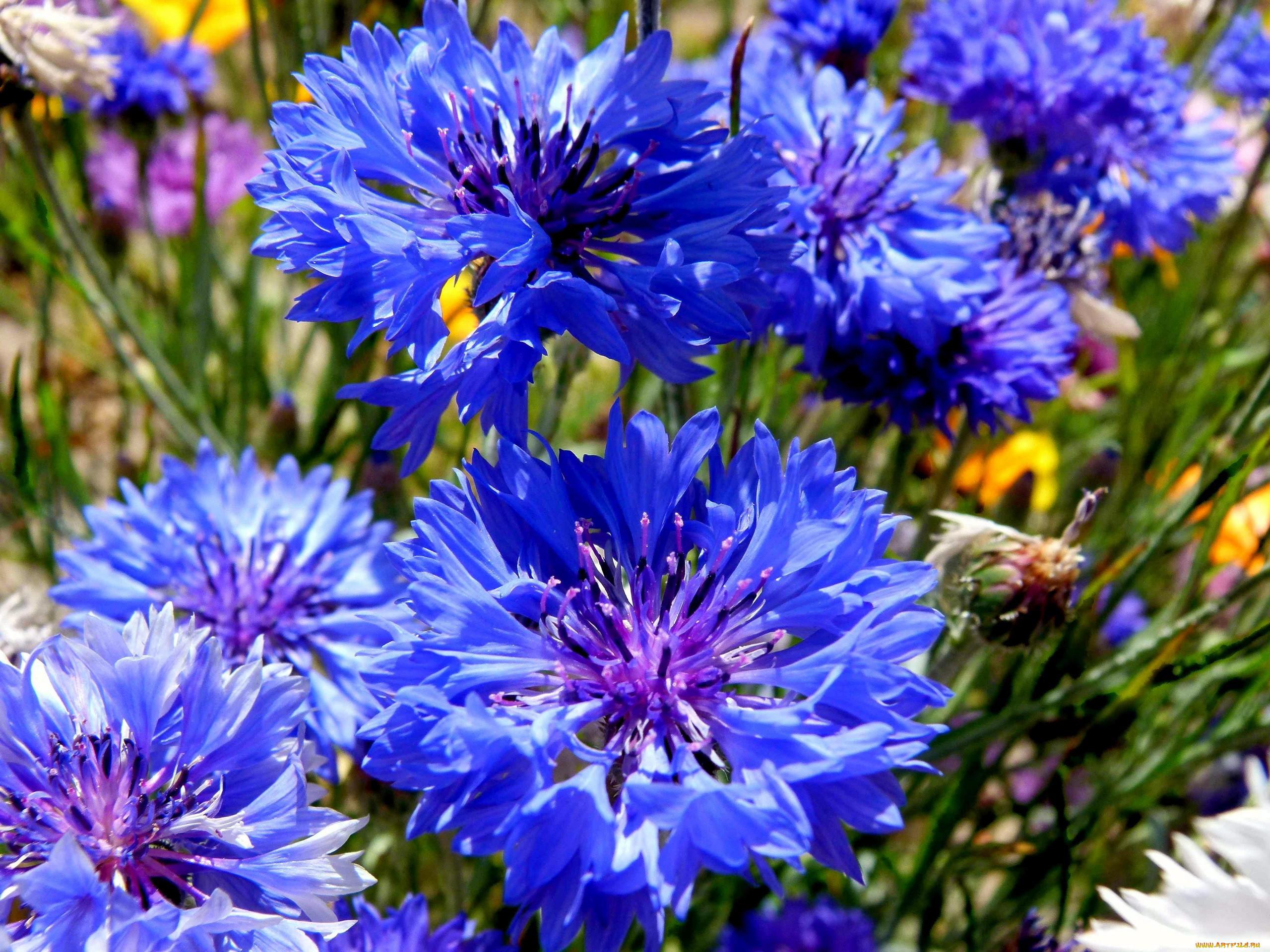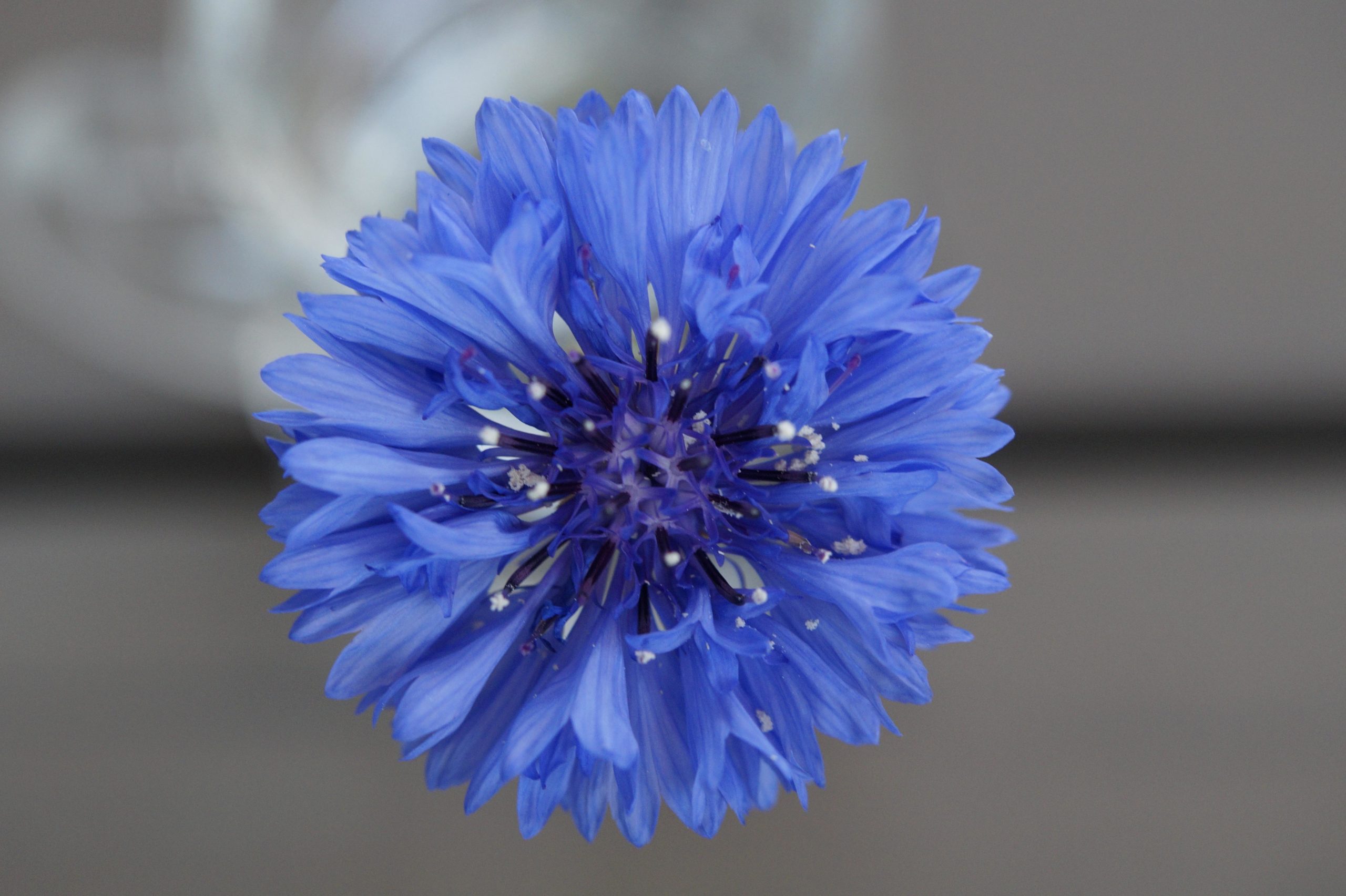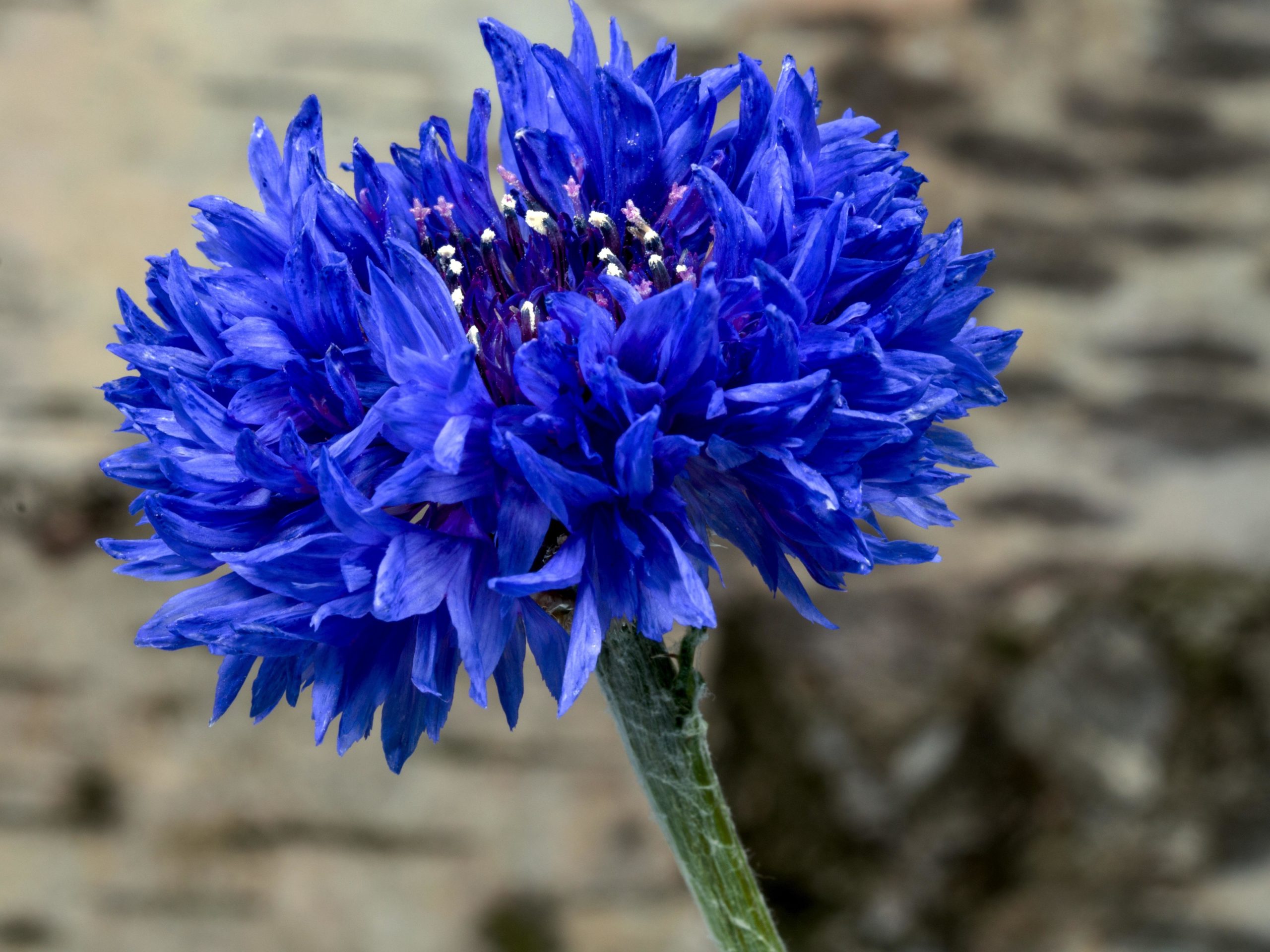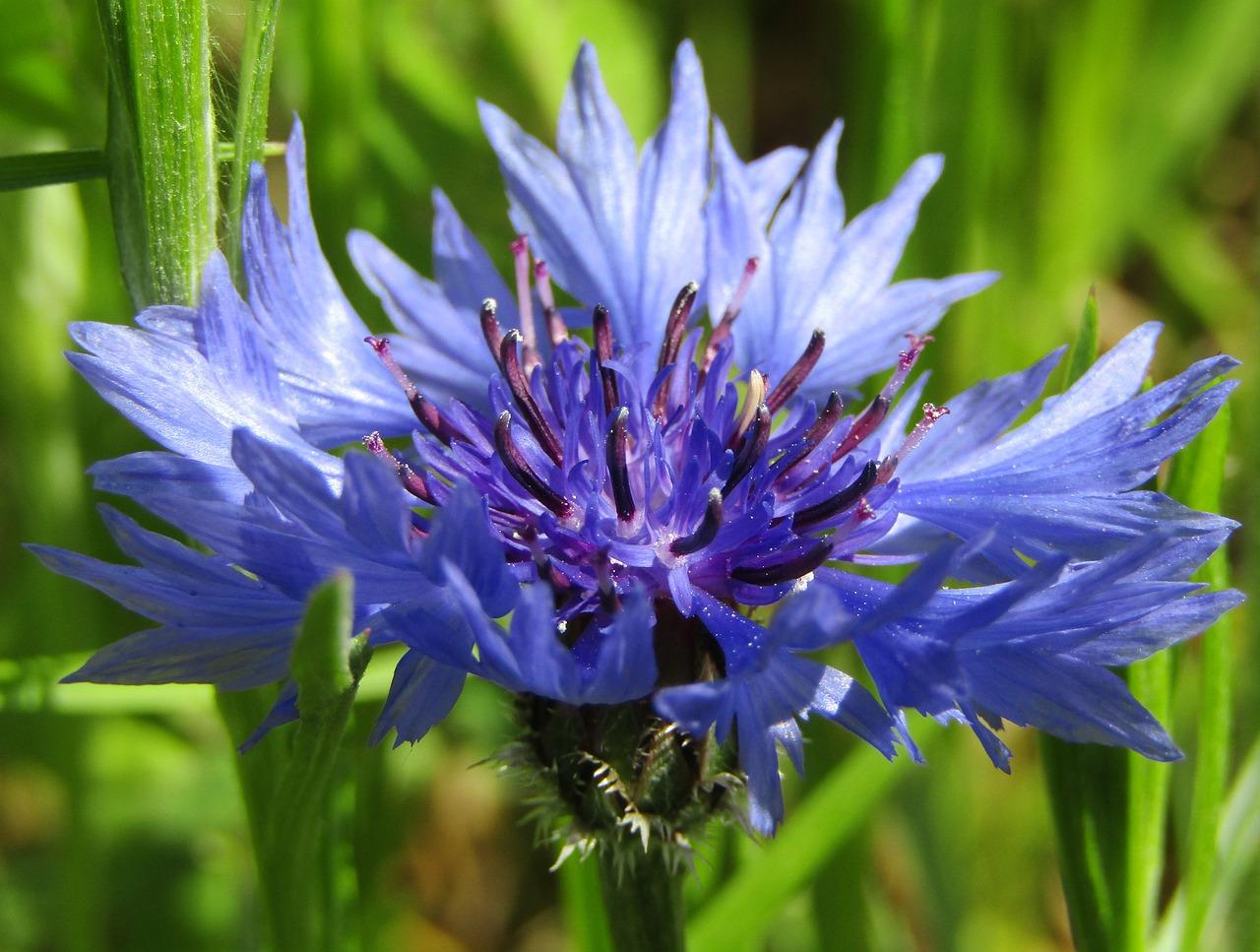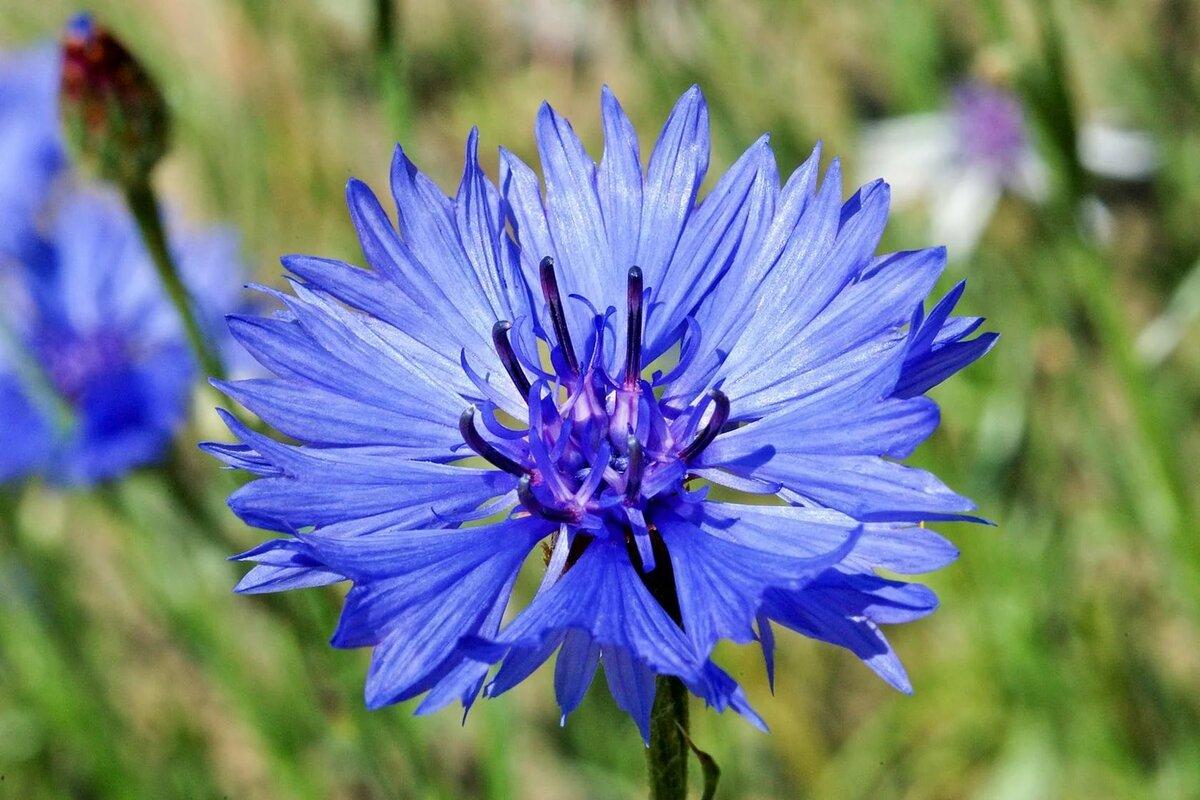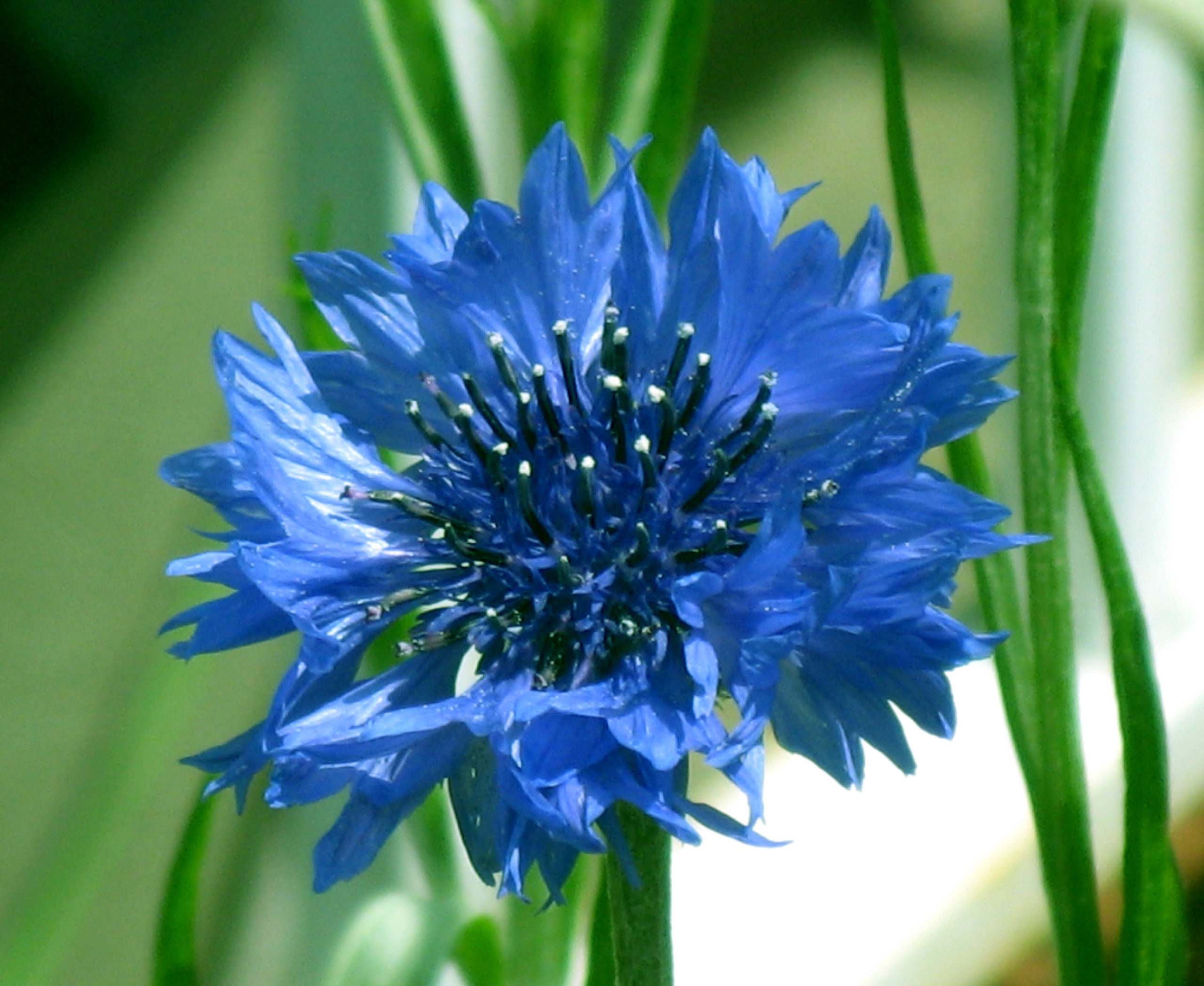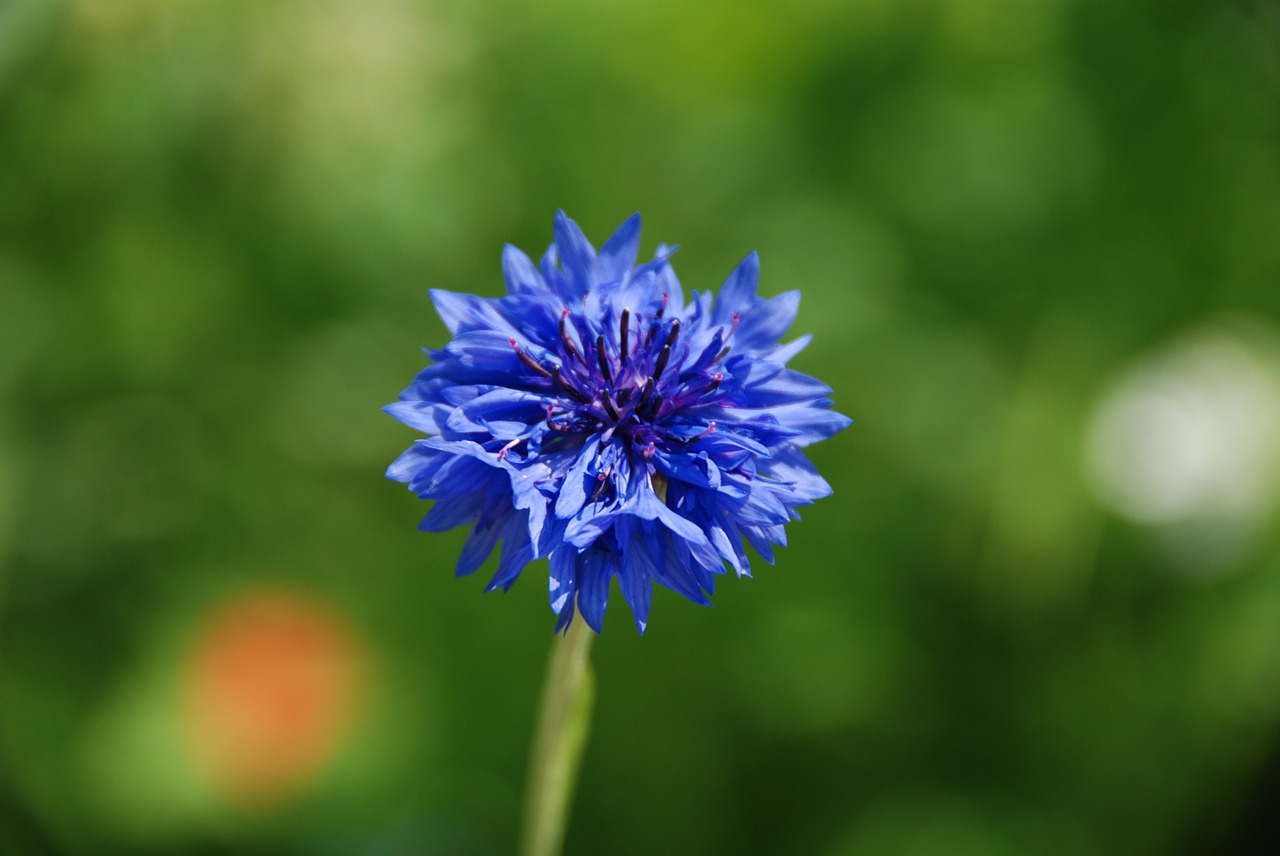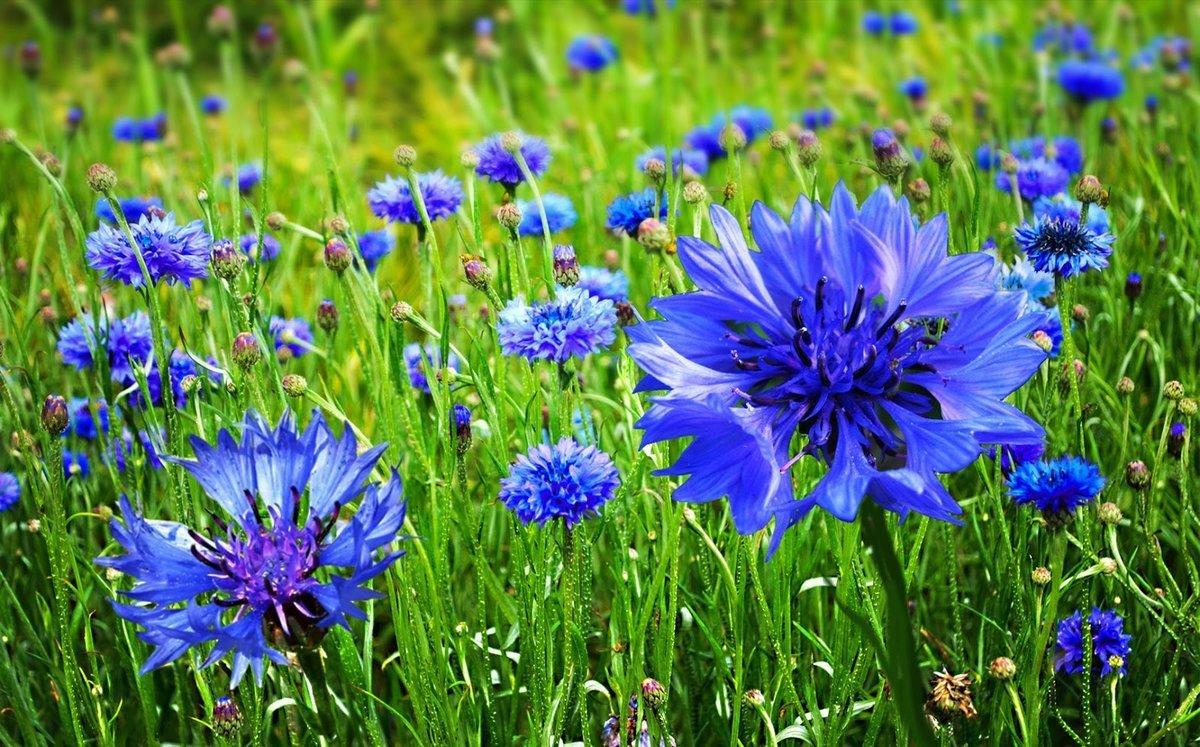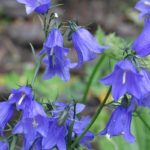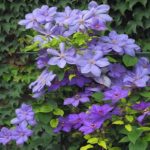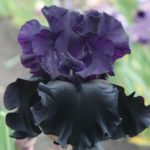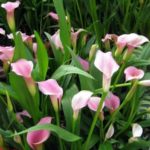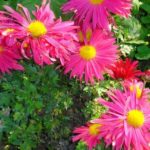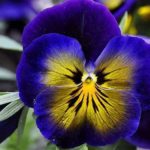Cornflowers have been known to gardeners since ancient times. In Rus', these wildflowers were considered a symbol of innocence and devotion. Since the 60s of the 20th century, blue cornflower has been the national pride of Estonians. Thanks to breeders, various varieties with new shades of petals have appeared. Cornflowers attract gardeners not only for their ease of care and rich colors, but also for their healing properties. The flowers of the plant have an anti-inflammatory effect.
- Description of the flower
- Plant dimensions
- What flowers look like
- Cornflower leaves
- Recommendations for planting
- Step-by-step instruction
- Subsequent cultivation
- Reproduction
- Popular varieties
- Bride
- Alba
- Goldilocks
- Black Sprite
- Multi-colored border
- Polka dot
- Purple Heart (Ash Heart)
- Large-headed
- Whitened
- Seed (blue)
- Dark purple
- Beautiful
Description of the flower
Blue cornflower is an annual or biennial plant from the Asteraceae family. Its Latin name is Centauréa cyánus. The flower is also known by the popular names Voloshka, Blueflower, Rye Flower, and Sinyavka. Cornflower is found naturally in the central regions of the European part of Russia, growing on the edges of Siberian forests, in the Caucasus and Central Asia. Its homeland is southern Europe.
An unpretentious plant grows in fields like a weed and is capable of crowding out cereal crops. Resistance to environmental conditions is a feature of perennial cornflowers. They survive in heat and cold, rarely get sick, reproduce easily and bloom for a long time.
Cornflower overwinters in the fields, like winter wheat. There are no unwanted neighbors in the garden plot for the field dweller, but you need to make sure that he does not take away the territory from other flowers.
Plant dimensions
Cornflower grows on average about a meter high. The flower rises above other plants due to its long stem. Some species need to be tied up.
Plant parameters:
| Part of a flower | Length |
| Stem | From 20 to 100 centimeters, reaches 1.5 meters in large varieties |
| Inflorescence | 20-25 millimeters |
| Leaves | 3-10 centimeters |
Among the seven hundred species of cornflower, there are tall and creeping plants. The inflorescences are located on hard thin stems, so the flowers seem to cover the field or garden with a blue blanket.
What flowers look like
The bud of an unopened cornflower has a round shape. Bracts with a jagged border are green in color and come with black, brown or white edges.
Flowers form at the ends of the lateral branches of the stem.On one disk there are 25-35 small inflorescences, which together form a bud. In the central part of the disk there are small bisexual inflorescences of a purple hue, and on the outer part there are asexual, larger, blue ones.
Depending on the variety, cornflower flowers can be dense and massive, light like dandelion or pom-pom-like. The bright color of the petals is due to the abundance of the glycoside protocyanin, a weak toxin. In herbal medicine, less saturated marginal inflorescences are used.
Blue cornflower blooms in the summer months, and with good care also in September. The plant produces a fruit - a seed capsule 4-5 millimeters long. It has an oblong, rounded shape, bright yellow, blue or gray color. The seeds are grayish-blue in color and covered with small fibers. Ripe achenes scatter when the wind blows.
Cornflower leaves
The stem of the plant is covered with tough foliage. Winter cornflowers form dense rosettes, covering the soil and wheat.
The length of the leaves is from 3 to 20 centimeters. At the roots they are covered at the edges with grooves and are larger, and higher up the stem they have solid edges. The color is green, with a bluish tint, less often silver. The shape of cornflower leaves is lanceolate, linear, pinnately lobed, trifoliate at the roots.
The upper leaves are covered with light hair and are attached directly to the stem without cuttings. The lower ones are held on by cuttings, but fall off first.
Recommendations for planting
Cornflower is a light-loving plant. In shaded areas it produces long stems and produces small flowers. Even the soft cornflower, which is tolerant of shade, eventually becomes smaller. Under strong gusts of wind, the flower will stand, but will bend to the ground.
The field plant does not like stagnant water in the soil and the leaves of its neighbors hanging over it, blocking the sun.Therefore, when choosing a site for planting blue cornflower, it is important to consider the following points:
- bright lighting;
- absence of nearby spreading bushes and trees;
- light loamy, moderately moist soil or good drainage;
- wind protection.
Cornflowers are planted in rows or in a checkerboard pattern and grown in pots. The optimal distance between plants in open ground is 10-20 centimeters. In prefabricated compositions, flowers are planted along the edges to provide more light.
Step-by-step instruction
Planting blue cornflower begins with preparing the soil. The site for spring planting can be prepared in the fall. If the soil is too acidic, prepare an alkalizing mixture of ash and chalk, with the addition of dolomite flour or lime. Mixture consumption - 300 grams per square meter. To make the soil looser, add a bucket of sand or sawdust per square meter.
Just before sowing, the soil is dug up with humus or peat, nitrophosphate or wood ash. Depth - on the bayonet of a shovel.
Blue cornflower seeds usually do not need to be prepared for sowing. Only the Fischer variety must undergo stratification before autumn planting. The process is simple: keep the seeds in a plastic bag for 1-2 months on the top shelf of the refrigerator.
Planting cornflowers takes place in several stages:
- slightly level the dug up soil;
- dig holes 3-4 centimeters deep and water;
- Place the seeds in the holes and cover with soil.
Fresh beds are covered with spunbond and watered every 3 days. Shoots can be expected within a week.When sprouts emerge, the covering is removed. On the seventh day after emergence, the beds are thinned out so that the distance between the stems is 10-15 centimeters.
Before planting ornamental varieties in the ground, you can prepare seedlings. This will help the plants take root and adapt better. The best season for planting seedlings in the garden is mid-spring. Plastic containers or ceramic pots of any size are suitable for germinating seeds.
How to grow seedlings step by step:
- fill the container with soil for ornamental plants;
- make holes 2 centimeters deep and water;
- place the seeds in the recesses and sprinkle with earth, do not compact;
- cover the seedlings with plastic wrap.
Containers with planted flowers should be kept in a warm place, at a temperature of +20 degrees. When green sprouts appear, the film must be removed. Cornflowers are fed once a day with complex fertilizer for seedlings. Flowers are ready for planting in the garden when the height of their stems reaches 10-12 centimeters.
Subsequent cultivation
Blue cornflower grows in one place for up to seven years. Annual and biennial flowers in general do not require special fertilizing or a special watering regime. Additional moisture is required only during particularly dry seasons.
A sign of a lack of water is small flowers and dried leaves. After restoring the water balance, the cornflower will return to normal. To make watering easier, you can install a drip irrigation system on the beds. But it is important to remember that waterlogging is more dangerous for blue cornflower, since a flooded plant will not recover. Also, excess moisture provokes fungal diseases.
When annuals are overwatered, they become ill with fusarium, which manifests itself in the form of brown spots on the leaves. In this case, the plants are treated with Fundazol.Spraying with an aqueous solution of manure prepared in a 1:1 ratio also helps against the disease.
In order for cornflowers to bloom longer, they need to be fed. In the period before flowering, a solution of nitrophoska and urea is added to the soil, a tablespoon per 10 liters of water. After fertilization, the cornflowers will bloom until autumn. To make flowers bloom faster, plants with buds are sprayed with Zircon.
Trimming faded buds also helps to prolong flowering. Blue cornflower is pruned in two ways:
- top pruning - removing all dried parts of the plant;
- bottom pruning - shortening the stem to a height of 10 centimeters above the soil.
It is preferable to trim cornflowers using the first method. Then the plants retain their fluffiness and volume. After low pruning, the beds lose their decorative effect. The second method is used for perennials to prevent the spread of diseases or for vegetative propagation.
Reproduction
Blue cornflower is propagated by seeds and root division. The vegetative method is suitable for perennial varieties with a branched root system, for example, Phrygian, bleached, large-headed. Fisher's cornflower produces basal shoots. If the variety is distinguished by its root in the form of a rod, it will not be possible to divide it, for example, musk cornflower.
A favorable time for division is in the spring before flowering or in the summer-autumn period after flowering. How to divide blue cornflower root:
- dig up a bush, shake off the roots from the soil and place in a basin of water;
- divide so that each part has three buds;
- The resulting bushes are planted in a new place.
After planting, the plants will require bottom pruning.In the first month, seedlings are watered 3-4 times. Divided bushes will bloom the next year.
Blue cornflower seeds are collected after flowering has ended, when the boxes have formed. A ripe achene changes color from green to brown. Ripe boxes are cut off if the cornflowers are planned to be planted elsewhere. If you leave the achenes on the bushes, they will fall off on their own and germinate naturally in the spring.
Popular varieties
Varieties of blue cornflower include tall and dwarf varieties. A special feature of plant varietal diversity is its different root system. In soft cornflower it is represented by a long root with small shoots.
Fisher's cornflower has a branched root. Russian cornflower takes deep roots with the help of one long shoot. Other varieties have thick rhizomes.
Decorative cornflowers are used in landscape design, planted in flower beds, lawns, and flower beds. Flowers in blue shades go best with red poppies, yellow calendula or escholzia, and bright cosmos.
Bride
The inflorescences of the tall variety look like creamy white clouds. The stems reach 100 centimeters in height, and the diameter of the flowers is 5 centimeters. The musky variety Bride is suitable for growing in a flowerbed or in a flowerpot.
Pros:
- flower stalks can be cut and used in bouquets;
- pleasant aroma;
- reproduces well by self-sowing.
Minuses:
- not suitable for transplantation;
- it is necessary to loosen the soil;
- sensitive to waterlogging and nitrogen.
When planting, you should not add organic fertilizer, otherwise the Bride will bloom poorly. If there is not enough air in the soil, the inflorescences become smaller. The tap root excludes vegetative propagation.
Alba
The mountain variety is distinguished by bright snow-white inflorescences. It belongs to the medium varieties and grows up to 60 centimeters.Flowering of Alba cornflower begins in the summer and lasts up to three months. The diameter of the open buds reaches 7 centimeters.
Advantages of the variety:
- can grow in acidic soil;
- cold resistant;
- perennial
Minuses:
- the bush needs division every three years;
- sensitive to drought.
The Alba variety is more tolerant of soil acidity, but every three years at the beginning of autumn you need to add lime to the soil. On overgrown bushes, the flowers fade, so the plant needs to be divided regularly. Alba is used to decorate garden paths and flower beds.
Goldilocks
The variety is also known under the names Grossheimia, large-headed cornflower and yellow. Its peculiarity is its stems more than a meter long. The diameter of the open inflorescences is 5 centimeters.
Goldilocks Pros:
- blooms for a long time;
- suitable for bouquets;
- does not require regular division of the bush.
Minuses:
- long stems need to be tied up;
- sensitive to lack of oxygen.
Cornflower Goldilocks blooms two months after planting. Plants planted in June will bloom in September. Beds with yellow cornflowers need to be loosened, but the bushes live in one place without division for 7-10 years.
Black Sprite
The mountain variety stands out for its unusual dark purple, almost black inflorescences. Cornflower Black Sprite grows 35-40 centimeters tall.
Advantages of the variety:
- extravagance;
- suitable for cutting;
- grows in light shade.
Minuses:
- does not tolerate excess moisture;
- It is not advisable to plant in acidic soil.
The Black Sprite variety develops well in sandy and loamy soil. The plant needs drainage. The perennial blooms from May to July.
Multi-colored border
A mixture of medium-growing varieties gives the flower garden an elegant look. The height of the stems is 40 centimeters. Flowers have an average diameter of 4-5 centimeters.
Pros of Multicolored Border:
- double inflorescences of different colors: blue, red, purple, white, two-color;
- suitable for arranging bouquets.
Minuses:
- intended for cultivation in open ground;
- annual
Cornflowers of the Multi-colored border variety bloom all summer. To make the bushes lush, they need to be pinched.
Polka dot
The dwarf variety is a hybrid of low-growing species and grows a maximum of 40 centimeters. It is distinguished by its lush green foliage and color variety of inflorescences. In addition to blue, Polka Dot blooms with burgundy, red, pink and white flowers.
Advantages of the variety:
- long flowering;
- developed root system;
- drought resistance.
Minuses:
- after planting it is necessary to feed every two weeks;
- Fertilizers must be applied sparingly, otherwise the leaves turn yellow.
Under favorable conditions, the Polka Dot variety produces large flowers with a diameter of 5 centimeters.
Purple Heart (Ash Heart)
The name of the medium-sized variety comes from the unusual color of the flowers: purple central inflorescences are surrounded by white inflorescences. The buds have a cobweb-like structure and reach a diameter of 6 centimeters.
Pros of a Purple Heart:
- universal flower for garden design;
- resistant to diseases.
Minuses:
- not suitable for cutting;
- early and short flowering.
The flowers of the variety bloom from May to July. Cornflower Ash Heart tolerates dry weather better. Humidity can cause the plant to get fusarium.
Large-headed
Cornflower, one of the tallest varieties, reaches a height of 100 centimeters. The diameter of the flowers is a record 9 centimeters. The color of the inflorescences is yellow.
Advantages of the variety:
- bright, sunny, pleasant to look at;
- flower stalks can be used in bouquets;
- frost and drought resistant perennial.
Disadvantages of the flower:
- faded buds look unsightly;
- During the flowering period it needs feeding.
Dried flowers turn brown, so it is best to trim them. For better flowering, large-headed cornflowers need to be fertilized with wood ash and mineral fertilizers.
Whitened
The medium-sized variety is especially popular among gardeners due to its lush inflorescences of a pleasant lilac-pink hue with a white center. Often used by landscape designers in single and group compositions.
Advantages of white cornflower:
- looks organic in a flowerbed and in a natural planting;
- flower stalks are suitable for cutting;
- perennial variety.
Minuses:
- does not grow in acidic soil;
- does not tolerate the absence of light;
- blooms for two months.
To plant white cornflower, you need a site with neutral humus soil. Flowering lasts from July to August. The bushes grow in one place for up to ten years.
Seed (blue)
A winter variety with a classic deep blue color, it grows 80 centimeters in height. One of the most unpretentious species is easily propagated by seeds.
Advantages of cornflower Sowing:
- blooms from June to August;
- inflorescences have healing properties;
- honey variety.
Minuses:
- grows like a weed;
- simple compared to decorative varieties.
Cornflower Sowing has a branched root system, so its bushes can be divided.
Dark purple
The variety looks mysterious and exotic thanks to its rounded inflorescences of dark red or dark purple color with dark stipules covered with white fringe along the edges.
Pros of Cornflower Dark Purple:
- honey variety;
- perennial
Minuses:
- long stems need to be tied up;
- difficult to reproduce.
The seeds of the variety need to be germinated in containers, and then the seedlings are transferred to the ground. Mature plants do not tolerate transplantation well.
Beautiful
The inflorescences of the variety are distinguished by a delicate lavender, pink-lilac hue. Low plants grow 30 centimeters long.
Advantages of Cornflower the Beautiful:
- aesthetics;
- resistance to frost.
Minuses:
- difficult reproduction;
- short flowering.
The Beautiful variety blooms for 30-40 days. Flowers are grown from seeds by seedling method.

